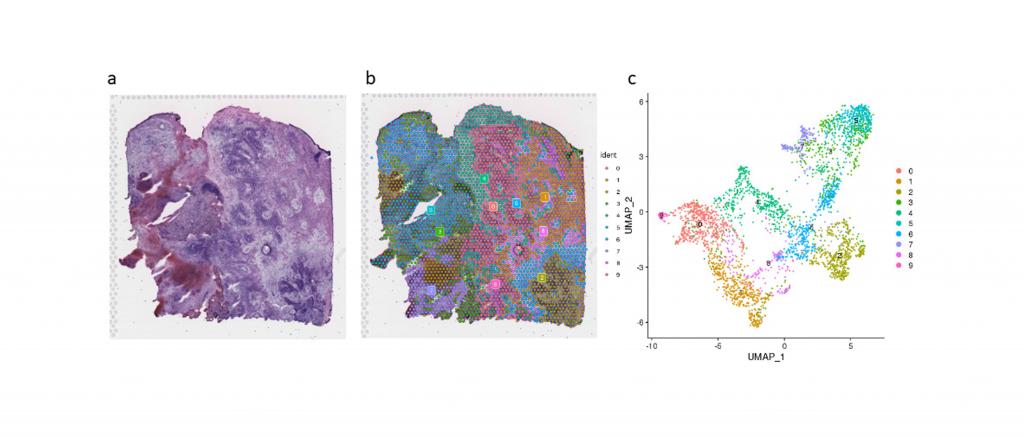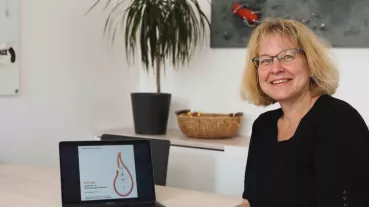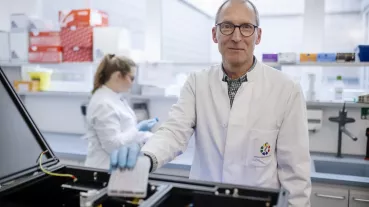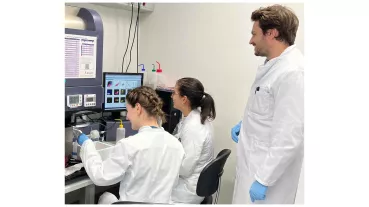Identification of morpho-molecular diversity and resistance traits in gliosarcoma

Image description:
H&E staining of a gliosarcoma sample (a) and corresponding spatial expression (b). UMAP of differentially expressed genes based on spatial transcriptomics highlighting ten highly different clusters within the sample (c).
A major obstacle for effective therapy in glioblastoma, one of the most common and aggressive primary brain tumors, is the intra-tumoral heterogeneity, resulting in recurrence driven by a resistant tumor cell population (clone) that has evaded previous treatment. Gliosarcoma, a subtype of glioblastoma, is the pivotal example of intra-tumoral heterogeneity: These tumors are morphologically characterized by a biphasic pattern with alternating areas displaying glial and mesenchymal differentiation. The mesenchymal component can already be present at first resection, but is particularly frequent in recurrences of pre-treated glioblastoma. This observation points towards a clonal selection of the mesenchymal clone under therapy and, thus, a higher resistance of the mesenchymal clone. In addition, there are important molecular differences between the two components. Single-cell sequencing technologies enable a comprehensive molecular characterization of the different subclones within tumors. The project will address the intra-tumoral heterogeneity in gliosarcoma by single-cell sequencing. Identifying the molecular characteristics behind emergence and resistance of gliosarcoma subclones would guide novel treatment approaches.
Here you can find further information:
https://www.klinikum.uni-heidelberg.de/pathologisches-institut/neuropathologie
https://www.dkfz.de/en/neuropathologie/



